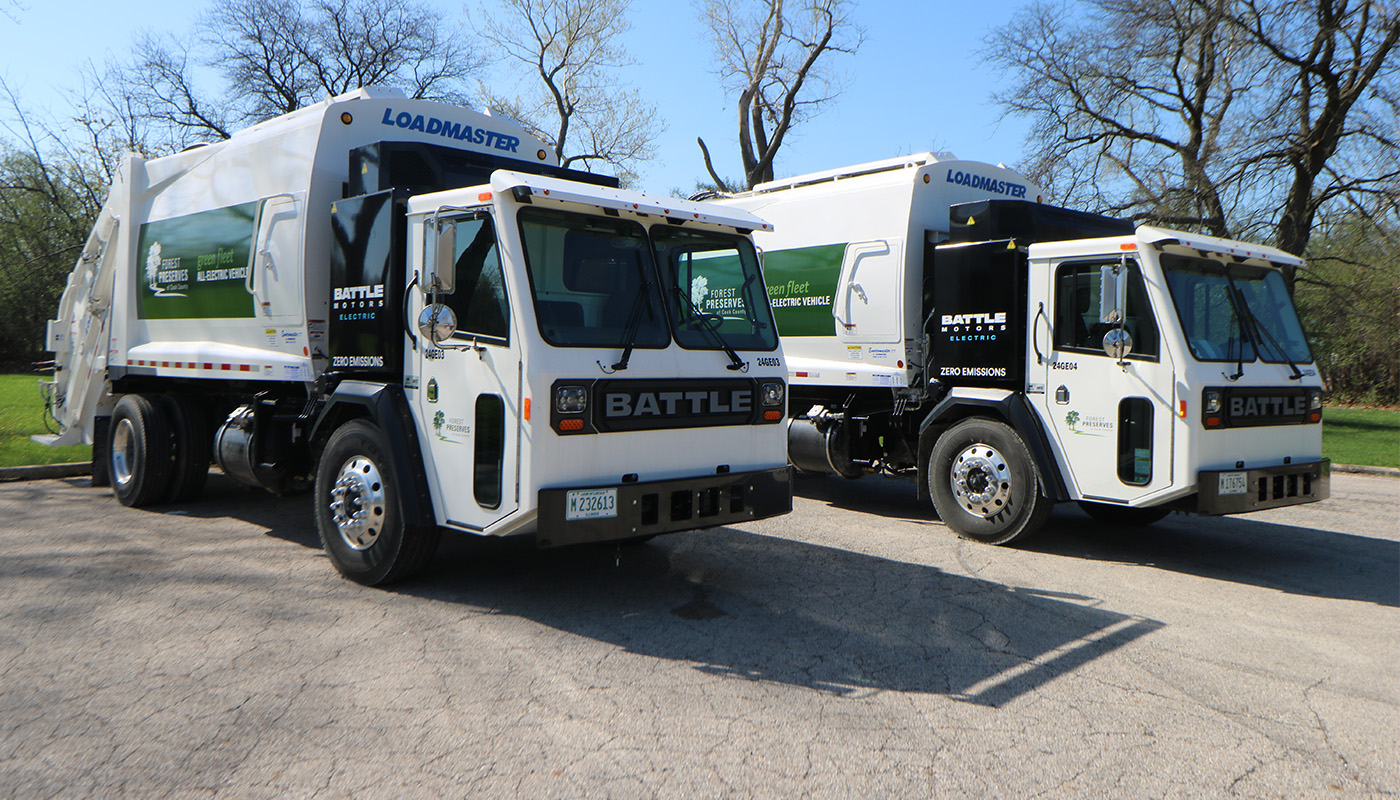This spring, you may see two brand new, zero-emission, split-body garbage trucks in the Forest Preserves of Cook County. By swapping diesel for clean energy, the Forest Preserves continues its efforts to fight climate change and ensure fewer and fewer of its vehicles are contributing to greenhouse gas emissions.
“It’s about sustaining and preserving the natural lands that we love that are negatively impacted by tailpipe emissions,” said Renee Patten, sustainability coordinator for the Forest Preserves. “We are showing that there is a way that we can continue with our operations of a sustainable way to protect those natural areas in a healthy way.”
The all-electric trucks join two propane garbage trucks already helping keep the preserves clean, with plans to purchase four more electric garbage trucks in 2025, two of which would be funded through a U.S. Environmental Protection Agency grant.
In 2024, the Forest Preserves also added 28 hybrid Ford Explorers and converted 24 pick-up trucks to propane, which produce roughly 30 percent less emissions compared to gasoline or diesel-powered vehicles. The aim is to add another 10 new electric vehicles this year.
Facilities and Fleet Director Eric Pedersen says his team is always looking for greener options: “Reducing our fleet carbon footprint is a top priority wherever it’s possible with current technology. Battery capacity and equipment durability is improving year over year, making green alternatives more feasible out in the Preserves.”
For these purchases to make sense, there also must be infrastructure in place, such as EV charging stations. The Forest Preserves currently has four to support the initial fleet and is in the process of installing 15 more.
Another green aspect of the new propane and all-electric trucks: The split-body means separate sections for recycling and landfill waste. That means one truck can empty the new blue and green garbage containers at a picnic grove or a parking lot at once.
“The biggest impact of having these trucks for our work is being able to collect all of the garbage and recycling in one run,” said Director of Landscape Maintenance Alma Arias. “Without them, that’s an extra trip our crews have to make.”
The two trucks will not cover the entirety of the Forest Preserves. One will primarily serve the Northwest Division, picking up waste and recycling in places like Busse Woods and Deer Grove. The second truck will be serving the Palos Preserves.
While vehicles are a major contributor to GHG emissions, Forest Preserves facilities are the largest source of emissions from natural gas and electricity, mostly due to their aging HVAC systems. The Department of Planning and Development is identifying heavy energy use buildings in order to determine which upgrades need to be made next.
“As we’re going in and upgrading away from fossil fuel HVAC equipment, we’re also looking at the windows and the doors, the masonry and the roof,” said Lori Nayman, the chief building architect with the Forest Preserves. “So there’s not a set straight path, but I think we’re combining those different pieces of information to inform which projects move forward.”
The Forest Preserves is in the process of making renovations to Caldwell Woods Wellness Center and General Headquarters including new HVAC equipment, windows, insulation and LED lights. Crabtree Nature Center has also undergone renovations and is now all electric with no fossil fuel use onsite. The Forest Preserves has four buildings that are LEED certified by the U.S. Green Building Council: Rolling Knolls Pavilion, Swallow Cliff Woods Pavilion, Little Red Schoolhouse Nature Center and Sagawau Environmental Learning Center.
All these projects are informed by the Forest Preserves’ Sustainability & Climate Resiliency Plan, with the goal to achieve Netzero GHG emissions by 2050 from a 2016 baseline. The plan was produced in collaboration with the Technical Assistance Program of the Illinois Sustainable Technology Center, a division of the Prairie Research Institute at the University of Illinois at Urbana-Champaign.
The Forest Preserves is currently on track to meet its 2030 and 2050 targets.

